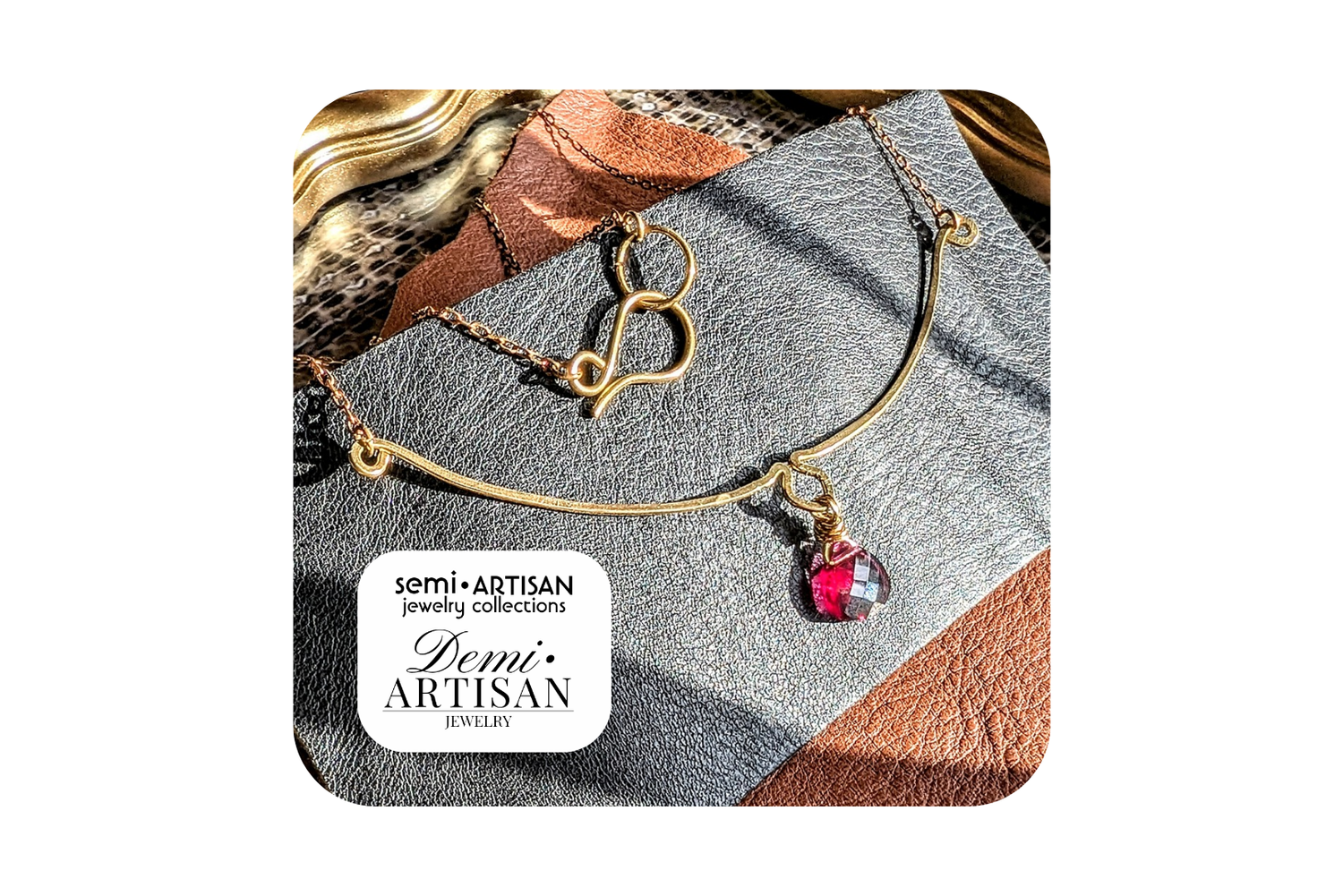How Therapy Fund Art Uses Brass: A Deep Dive into 260, 270, and 230 Brasses in Our Jewelry
Share
Understanding Brass Types in Jewelry: A Guide to 260, 270, and 230 Brasses
Brass has been a sought-after material for thousands of years, cherished by ancient civilizations like the Romans, Greeks, and Egyptians. They crafted stunning pieces of jewelry using brass for its gold-like appearance and durability. Brass continues to be a favorite in modern jewelry-making, offering an affordable and versatile alternative to precious metals, while still maintaining its warm, luxurious appeal.
At Demi•Artisan, we use a range of high-quality brasses, including Brass 260, Brass 270, and Brass 230, to create stunning, handcrafted pieces that reflect both modern and timeless styles. Meanwhile, our semi•Artisan line uses exclusively rich low brass, also known as red brass (Brass 230), which gives a warm, vintage charm to each piece. We carefully select these brass types for their beauty and workability, ensuring that they add value to your collection.
While there are other brass alloys, such as Brass 330 and Brass 360, that contain lead and tin for machinability, we avoid using these in our jewelry due to health considerations and the fact that they do not meet our standards for purity and aesthetic quality. Instead, we focus on brass types that maintain high copper and zinc content for a beautiful, safe, and durable finish.
In this article, we’ll explore the unique characteristics of the three main brasses we use—Brass 260, Brass 270, and Brass 230—and why they’re perfect for crafting beautiful jewelry. By understanding these metals, you’ll appreciate the richness and versatility that brass can bring to your jewelry collection.
Brass 260 (Cartridge Brass)
Composition: 70% Copper, 30% Zinc
Appearance: Bright, yellow-gold color
Brass 260, also known as cartridge brass, is one of the most popular brasses for jewelry-making, particularly for its use in wire wrapping. Its warm yellow color is similar to gold, making it an attractive and affordable choice for jewelry that demands elegance.
Why We Use It:
- Highly Ductile: Brass 260 is flexible and easy to work with, making it ideal for detailed wire-wrapped designs, intricate forms, and delicate accents. This malleability allows for precision and creativity in crafting stunning jewelry pieces.
- Bright Finish: Its vibrant, golden hue gives our Demi•Artisan pieces a luxurious, polished appearance, perfect for achieving a refined look.
Brass 270 (Yellow Brass)
Composition: 67% Copper, 33% Zinc
Appearance: Lighter yellow, with a reflective finish
Brass 270, also known as yellow brass, is slightly more rigid than Brass 260, making it perfect for structural pieces like bangles, pendants, and rings. Its pale yellow color provides a bright, clean look that mimics gold, making it a popular option in fashion-forward jewelry designs.
Why We Use It:
- Strong and Durable: Its slight rigidity compared to Brass 260 makes it suitable for creating jewelry pieces that need to maintain shape and structure, while still offering flexibility in design.
- Timeless Appeal: The reflective finish and gold-like color bring elegance to any piece, making it a favorite in our Demi•Artisan line.
Brass 230 (Red Brass)
Composition: 85% Copper, 15% Zinc
Appearance: Warm, reddish-brown tone
Brass 230, or red brass, is rich in copper, giving it a unique reddish hue. This brass is a favorite for those seeking a more rustic or vintage look, which is why semi•Artisan jewelry exclusively uses this alloy to create pieces with a warm, antique feel.
Why We Use It:
- Rich Patina: Red brass naturally develops a beautiful patina over time, adding character and depth to the jewelry. This aging process gives each piece a unique, timeless look.
- Malleability: Its softness makes it easy to hand-shape, while its warm tones make it visually distinct, perfect for creating jewelry with a vintage or artisanal aesthetic.
Other Brass Alloys We Avoid
While there are other types of brass like Brass 330 and Brass 360, we do not use these in our jewelry due to their lead and tin content. These alloys are often used in industrial applications for machinability, but they do not meet our standards for safe, wearable jewelry. At Demi•Artisan and semi•Artisan, we prioritize purity and aesthetic quality, ensuring that our jewelry is not only beautiful but also safe and long-lasting.
Discover the Beauty of Brass in Jewelry
Brass is a versatile and desirable material for jewelry-making due to its durability, workability, and aesthetic appeal. Whether you're drawn to the bright gold-like appearance of Brass 260, the structural strength of Brass 270, or the warm, rich tones of Brass 230, there is a brass type that will suit your style.
We invite you to explore our Demi•Artisan and semi•Artisan collections to see how these beautiful brasses can enhance your jewelry collection. And, if you’re looking for tips on how to care for your brass pieces, be sure to read our Complete Guide to Brass Jewelry Care to keep them looking shiny and new for years to come!

